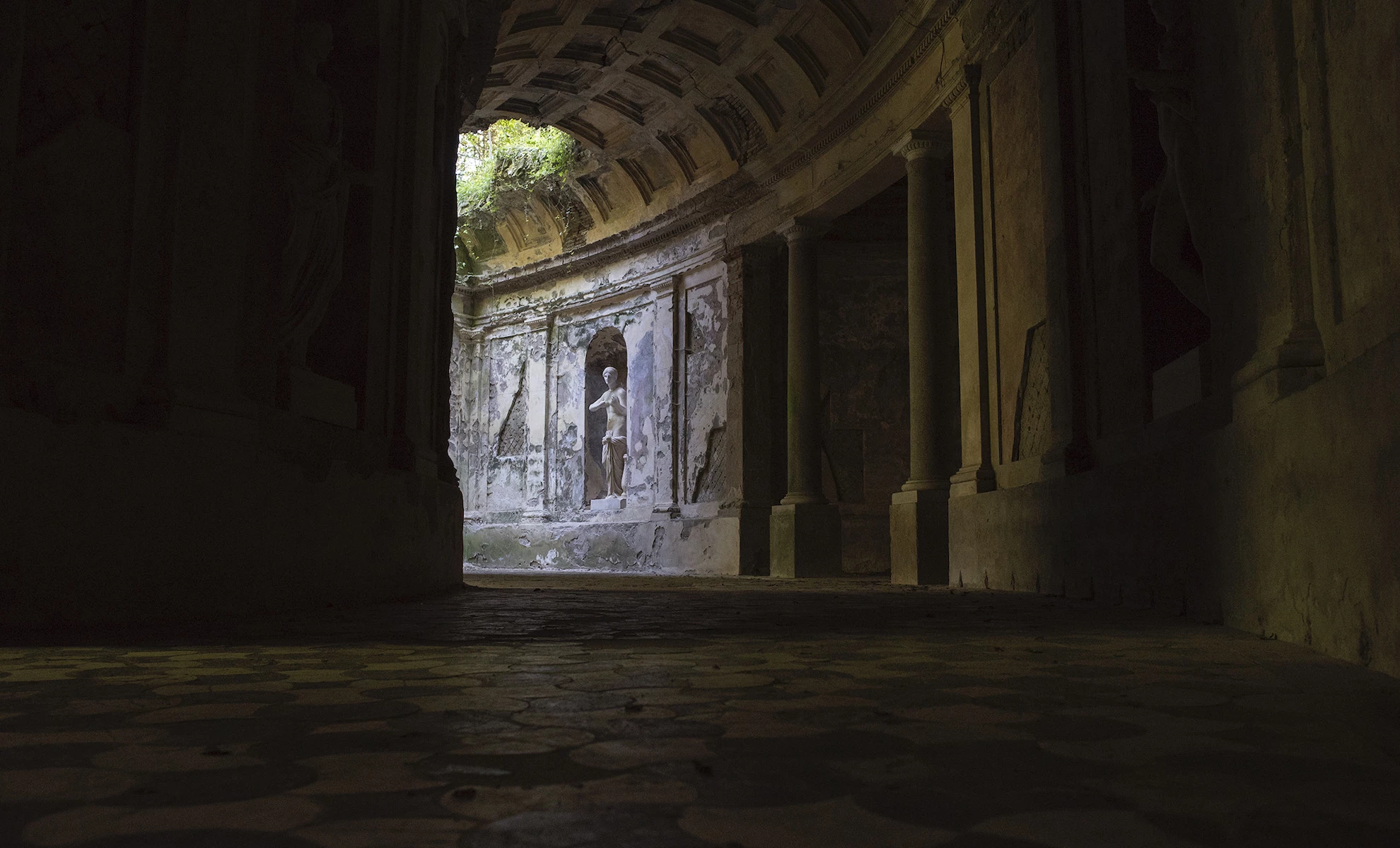Some ladies in an immense meadow, like colored dots on a green background. It is a painting that portrays the English Garden in the Royal Palace of Caserta, seen by the court painter Jakob Philipp Hackert. Walking today in the more than twenty hectares of the garden gives a similar effect: you feel tiny, compared to a space so large to appear endless.
Ph. Anna Monaco
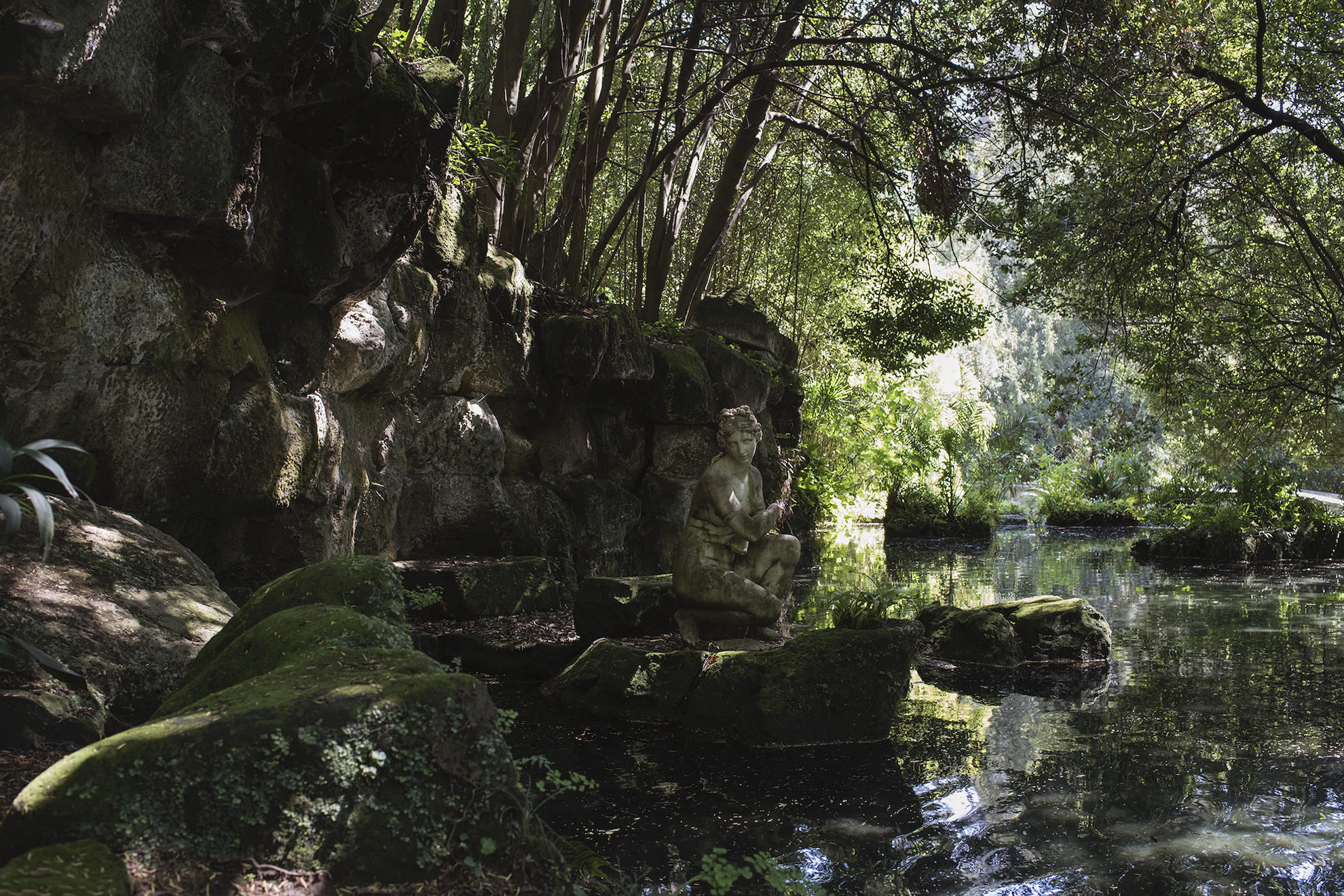
The walkways mark the path, but the best way to visit this place is to follow sounds and scents. Among the dense vegetation, of an intense green, an incessant flow of water attracts your attention. A hill leads to the origin of this sound. Trees, bushes, rocks, a pond reflect and amplify the nuances all around. The light is filtered by the branches that over time created a cover over this enchanted corner, a kind of dome that ends on the statue of Venus, ready to immerse herself in the water.
Ph. Anna Monaco
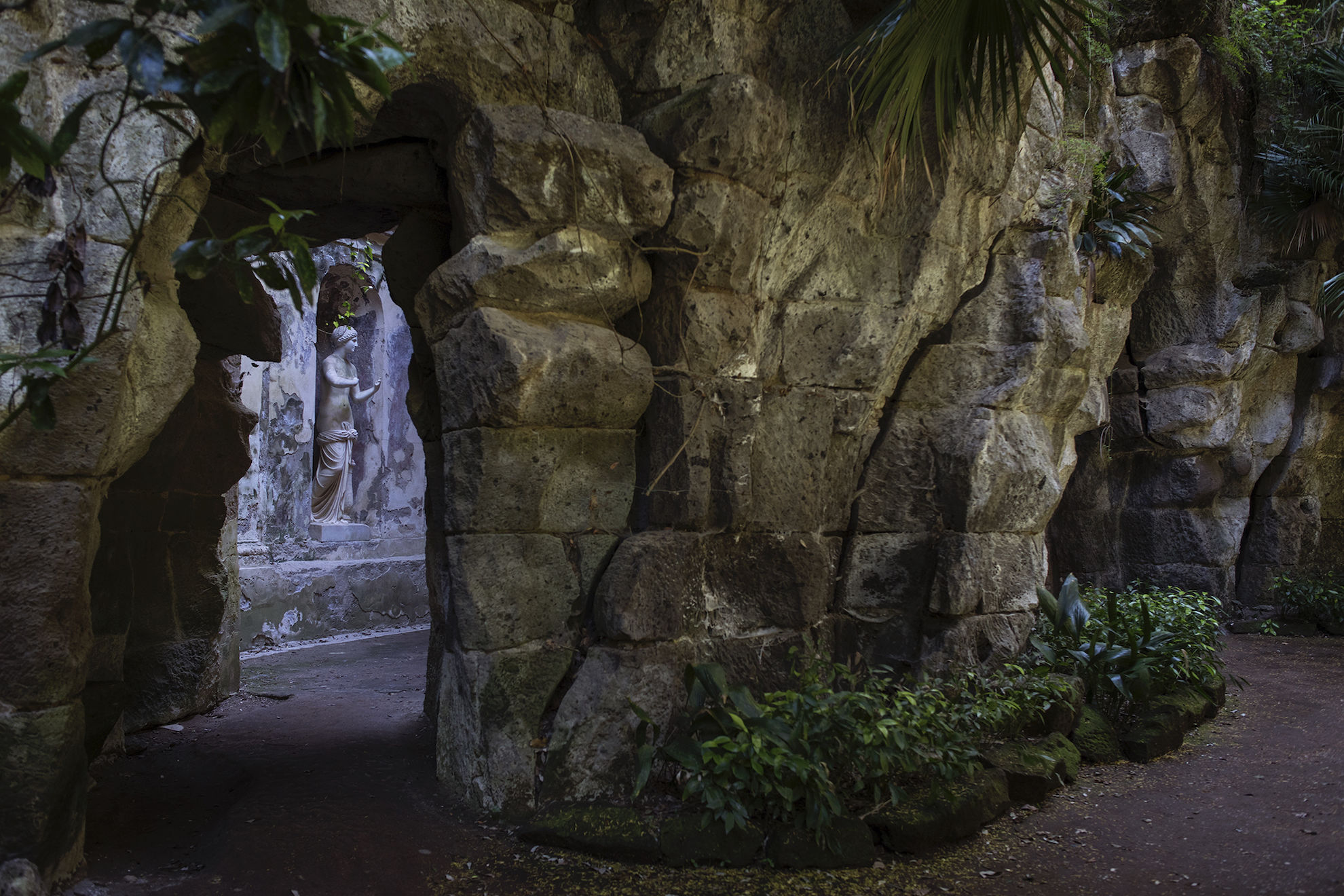
The Bagno di Venere is one of the most surprising places in the garden, where nature and art almost compete in terms of their ability to amaze. In the eighteenth century queen Maria Carolina of Austria, the great artist and architect Carlo Vanvitelli and Andrew Graefer, a gardener who had come to the court specially from England, designed and realized from scratch this dream made of exotic plants, esoteric suggestions and memories from the past.
Ph. Anna Monaco
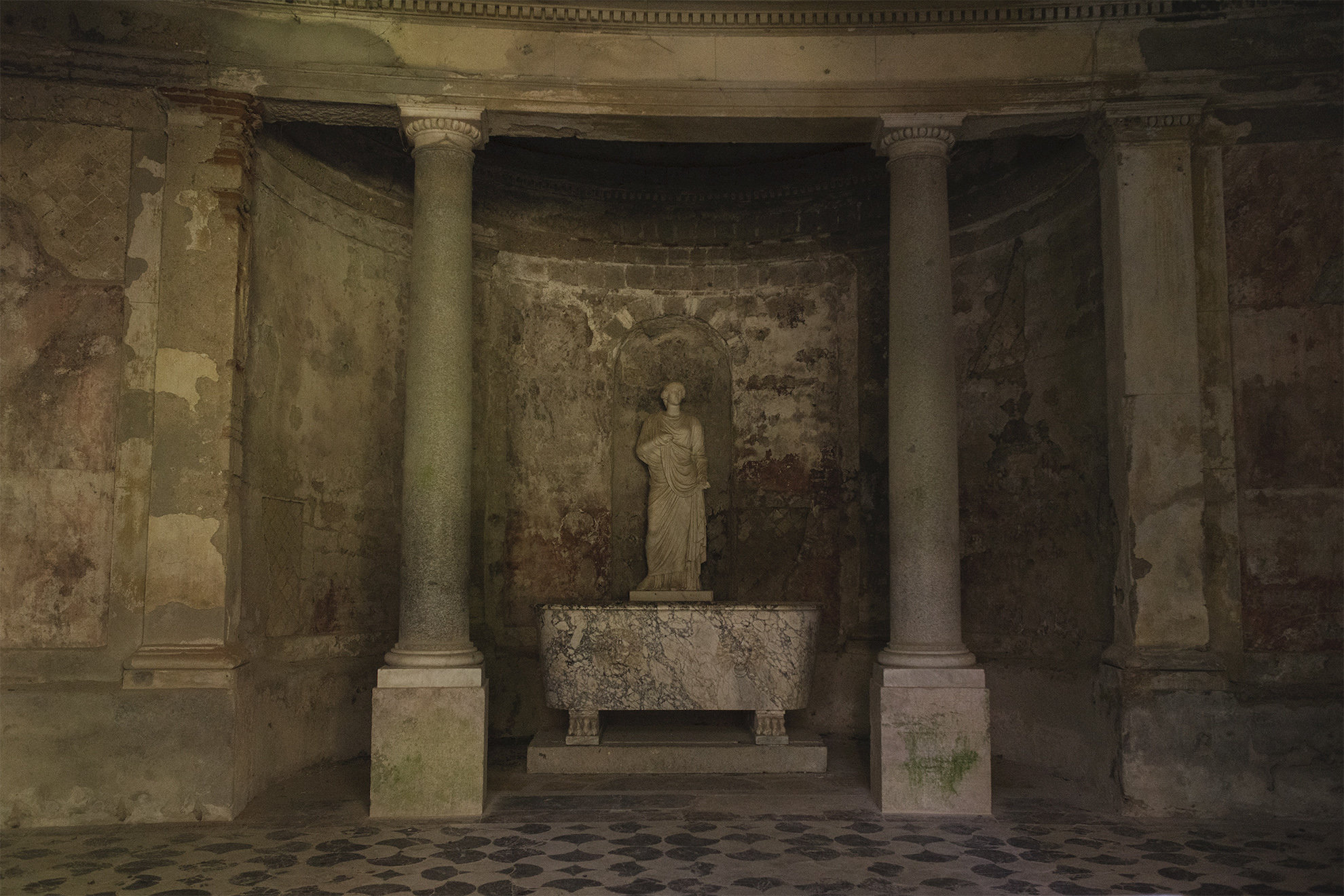
The body of water, the small spring, Venus, the smelly branches of the trees and then a hit of theater: you can see a cave and a statue peeps inside. A few steps and beyond the cave you see a covered passage, the Cryptoporticus, so loved by the ancient Romans in their houses.
Upon entering, you walk on the remains of a marble floor, while on the walls traces of colored stucco alternate with opus reticulatum. Then niches with statues and a coffered vault partially damaged, in others uncovered, so much to see the sky and the vegetation above. A cryptoporticus marked by the charm of the ancient, with a decadent note, in a lush natural context. Really too good to be true... And in fact it's all fake. Or almost.
Most of the statues are ancient, properly restored, as well as the porphyry sarcophagus placed halfway along the way, from the Farnese and Herculaneum collections. But the cryptoporticus is an eighteenth-century invention, designed to instill in those who walk through it the conviction of discovering something sensational and ancient, which unexpectedly reveals itself. A discovery that has been repeated for centuries, with unchanging amazement. The same emotion that in that period had to be felt in Herculaneum and Pompeii in front of the archaeological discoveries.
Ph. Anna Monaco
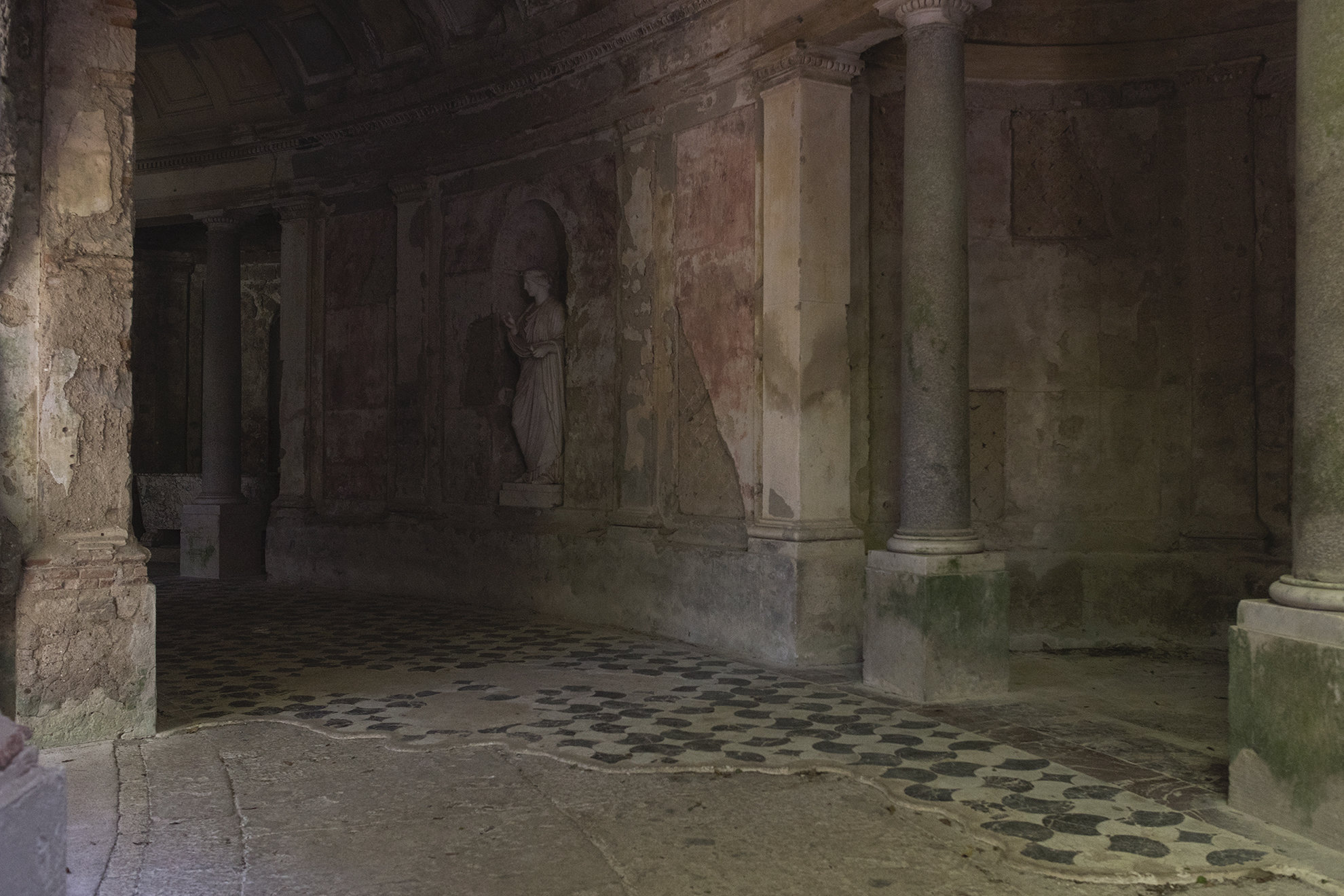
At a certain point a gap opens, you can see the lake and the majestic yew tree: the artifact converse with the natural. Or maybe not. Because the whole garden, every plant, tree or bush responds to a precise design, imagined by the queen.
So what seems ancient is not entirely ancient, what seems pure is not at all. The water continues to flow, but in the cryptoporticus time is as if suspended, and we love to believe in this sweet blunder.

